Main menu
Common skin conditions

NEWS
Join DermNet PRO
Read more
Quick links
Created 2009.
Herpes simplex virus (HSV) type 1 mainly affects the face and type 2 mainly affects genital skin, although in 10% of infections the reverse is true and any mucocutaneous site may be affected.
The virus is inoculated into the affected area and is more likely with minor injury, e.g. facial lesions contracted in rugby (‘scrum pox’).
Both type 1 and type 2 herpes simplex viruses reside in a latent state in spinal anterior horn cells. Recurrences are due to proliferation of virus within the epidermis of the affected dermatome and present as clusters of 2-3mm umbilicated clear or haemorrhagic vesicles. These persist for 5 to 10 days and are typically preceded by localised tingling or burning. Mild fever and malaise may occur. Asymptomatic viral shedding is also common.
Following the initial infection immunity develops but does not fully protect against further attacks in the same or new sites. However where immunity is deficient, both initial and recurrent infections tend to recur more frequently and to be more severe.
Complications may include:
Recurrent herpes infections can be triggered by:
Herpetic gingivostomatitis Recurrent herpes labialis Recurrent facial herpes Eczema herpeticum Genital herpes Primary herpes simplex 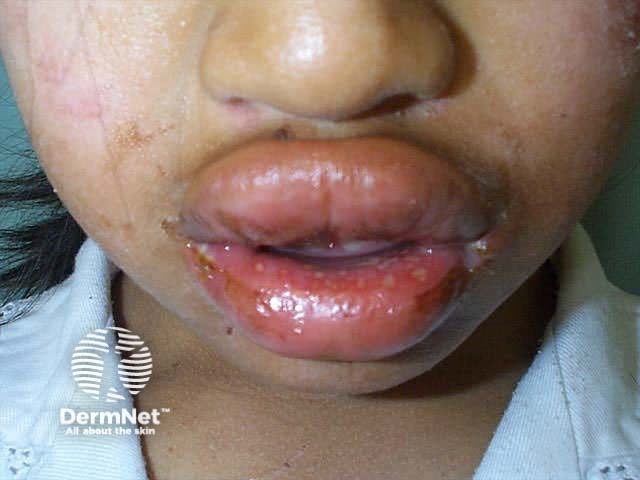
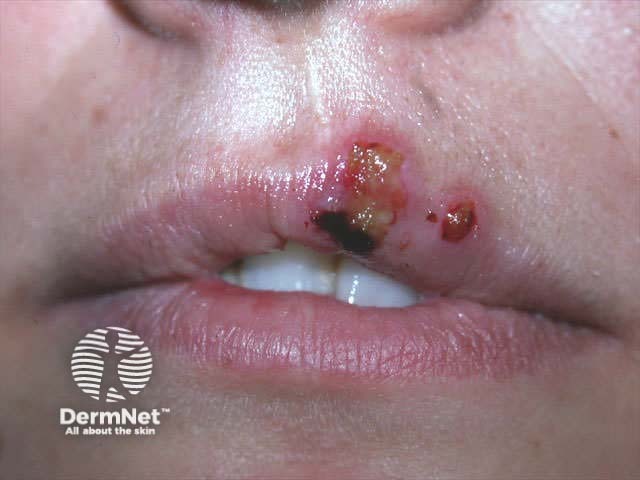
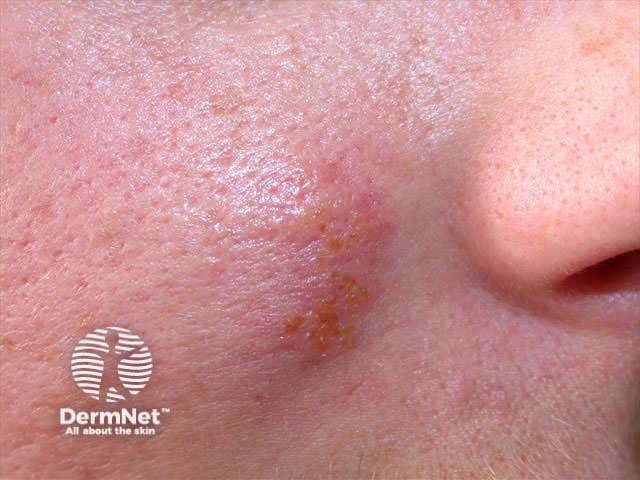
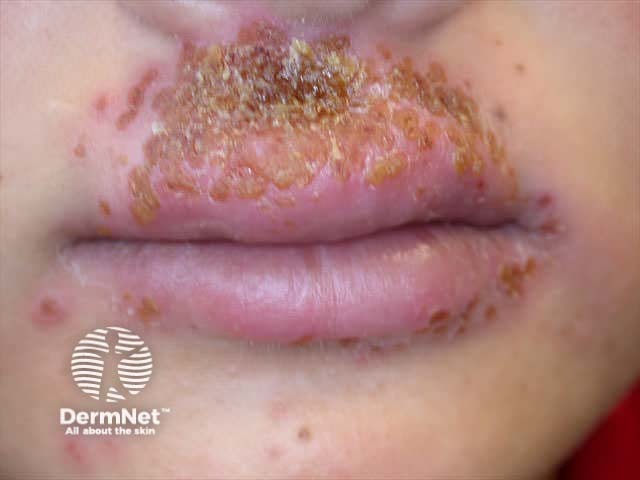
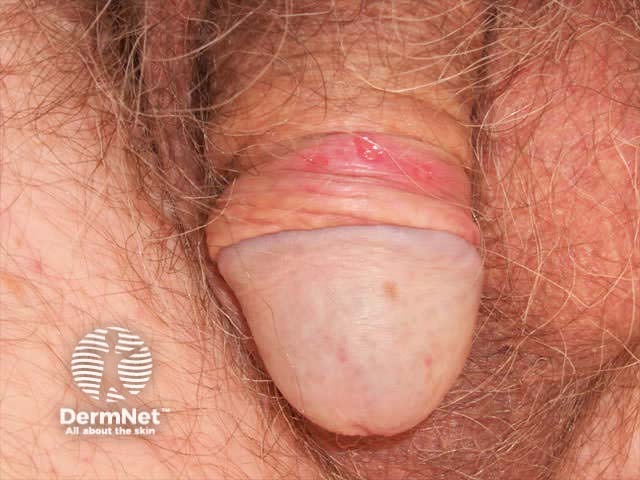
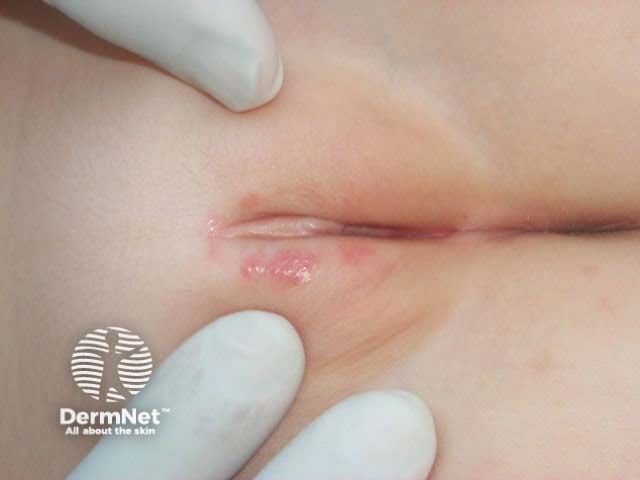
The diagnosis may be confirmed by one of the following methods:
Topical therapy for mild herpetic infections may include:
Oral aciclovir is used for:
Resistant cases, 23 April 2005in the presence of HIV infection, may be treated with foscarnet
There are no other systemic antiherpetic drugs available in New Zealand. However, twice daily dosing is more convenient and possible with famciclovir and valciclovir.
Find out the prevalence of herpes simplex type 1 and type 2 infections in New Zealand. How many patients are symptomatic?
Information for patients
See the DermNet bookstore